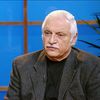The recent death of Nobel Prize-winning chemist William N. Lipscomb, Jr. highlights the pivotal role of the scientist-educator and the importance of funding early career scientists, especially at a time when U.S. scientific preeminence -- and the jobs that flow from it -- is challenged as never before. Dr. Lipscomb, whose early research was supported by Research Corporation for Science Advancement, the foundation that I head, not only won the Nobel Prize, three of his students did, too.
The role of the scientist-educator is not defined, however, by the Nobel Prize or by the educational setting. That setting could be a university, a liberal arts college, a high school or even an elementary school. Liberal arts colleges have long been recognized for their outsized role in producing graduates who go on to receive doctorates in the sciences. And, while Dr. Lipscomb was a professor of chemistry at Harvard from 1959 to 1990, he traced his interest in the field, according to The Washington Post, to a "chemistry set presented to him as a boy." Upon graduation from high school, he donated to the school the lab equipment that he had assembled in his bedroom, "more than doubling the campus' equipment" according to the Los Angeles Times.
The role of the scientist-educator is instead defined by a dual commitment to hands-on research and to passing on the excitement of the scientific method of inquiry to a new generation. Those two components are inextricably linked, because hands-on research has proven to be an extraordinarily effective way of captivating potential scientists.
What excited Dr. Lipscomb about the scientific method was its potential for boldness and for proving conventional wisdom wrong. As the Los Angeles Times reports, "When Lipscomb began his studies in the 1940s, boron was considered a relatively uninteresting atom. Although it resides right next to carbon on the periodic table of the elements, researchers knew of few natural compounds containing it and professed little interest in it. Lipscomb was puzzled by a lecture of his mentor, (two-time Nobel Prize-winner) Linus Pauling, in which Pauling proposed a theory of chemical bonding for boron that did not seem correct. Lipscomb set out to prove him wrong." In 1976, Dr. Lipscomb won the Nobel Prize in Chemistry "for his studies on the structure of boranes illuminating problems of chemical bonding."
As an educator, he also understood that science had to be presented in a compelling way. According to The New York Times, "Dr. Lipscomb told his son, James, that he received a C in high school chemistry. His grade, based on just the final exam, demanded that he memorize the first 10 elements of the periodic table, but Dr. Lipscomb could not be bothered by such mundane tasks. 'I could just look it up,' he said. 'So I didn't do it.'" Even a future Nobel Prize-winner could be bored by the science he loved when forced to learn by rote.
In 1959, Research Corporation for Science Advancement awarded Dr. Lipscomb a grant "for determination of the molecular structure of an enzyme, a proteinase from Tetra-hymena pyriformis W, by x-ray diffraction methods." The grant was made when he was 40 years old -- still "young" in terms of a science career and 17 years before he would win the Nobel Prize. It not only related directly to his transformational research, it was an important affirmation in the evolving career of a promising young researcher.
The press release issued by the Royal Swedish Academy of Sciences, in awarding the Nobel Prize to Dr. Lipscomb, stated "it was not until Lipscomb's works from the beginning of 1950s onwards that the problems in borane chemistry could be satisfactorily solved... With his fellow scientists he has determined the geometric structures by means of X-ray diffractions and by using modern quantum mechanical calculations has been able to determine and, in many cases, predict the stability and reactions of the molecules under varying conditions. Knowledge of the great subject field, covering the boranes and related chemical compounds, has thus been enormously enriched, at the same time as scientists have gained a deeper insight into the nature of chemical bonding. Lipscomb has tackled the problems on a broad front, working in a little known field that is difficult to penetrate, and he has been the leading figure in the advances made there. The breadth of Lipscomb's scientific achievement is also demonstrated by the eminent work he has done in other fields of chemistry. To mention but one, he has made notable findings in studies of the structure and mechanisms of enzymes."
Dr. Lipscomb was a scientist-educator of the highest level -- creating a legacy of transformational research as well as countless students whose own appreciation of science -- whether Nobel Prize-winning or not -- was greatly enhanced by his teaching. Yet he was modest about it all. As The Washington Post reports, "The big things he tried, Dr. Lipscomb once claimed, did not work out. But, he said in a matter-of-fact explanation of his achievements, 'I set intermediate goals.'"
